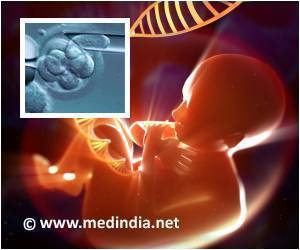
‘Kids with SMA who received nusinersen had a less favorable prognosis than those treated with onasemnogene abeparvovec.’
Read More..Tweet it Now
No added benefit is proven, however, for older patients (types 2 and 3) and for presymptomatic infants whose genetic defects were detected in newborn screening. For onasemnogene abeparvovec, no added benefit is proven for any of these four groups.Read More..
Classification according to age and gene status
SMA leads to the progressive death of certain nerve cells in the spinal cord that are responsible for muscle movement. Muscles that no longer receive a movement signal remain unused and become weak. This impairs a child’s motor development.
The cause of 5q spinal muscular atrophy is the absence of a signalling protein due to a defect in the SMN1 gene on the longer arm – the so-called q-arm – of the 5th chromosome.
Onset and severity of the disease differ between patients with this genetic defect. This is because another, very similar gene, SMN2, produces small amounts of the required signalling protein as a so-called splice variant.
Advertisement
In the infantile form (type 1), only one or two SMN2 gene copies are present. If left untreated, the children show symptoms only a few weeks after birth, develop hardly any motor skills and die at one to two years of age as a result of respiratory weakness.
Advertisement
Thanks to the newborn screening for defects in the SMN1 gene, which is now well established in Germany, it is possible to start treating the children identified in screening before the first symptoms appear.
Different therapeutic approaches
Risdiplam, similar to nusinersen, targets the mRNA of SMN2 to increase the formation of functional SMN protein. In contrast to nusinersen, however, risdiplam, a so-called splicing modifier, is available as a soluble powder and is taken orally once a day. This avoids the risks of injury and infection associated with nusinersen injections into the spinal canal.
The third new drug, onasemnogene abeparvovec, takes a different approach: a modified virus delivers intact versions of the SMN1 gene to the cell nuclei; hence it is a gene therapy. A single dose of the drug is injected into the bloodstream.
Added benefit for the youngest patients
In July, IQWiG investigated the evidence on risdiplam. For children with SMA type 1, there was a hint of a non-quantifiable added benefit of risdiplam in comparison with nusinersen – mainly because the risks of repeated injections into the spinal canal are eliminated and risdiplam is at least as effective as nusinersen according to the available data.
For all other patient groups, namely patients with SMA types 2 and 3 as well as symptom-free newborns with a maximum of 3 or with 4 SMN2 copies, an added benefit is not proven, however.
IQWiG has now investigated whether the third drug, onasemnogene abeparvovec, compared with the respective appropriate comparator therapy, offers an added benefit to four groups of patients with up to three copies of the SMN2 gene.
The appropriate comparator therapy for SMA type 1 or 2 and presymptomatic newborns was nusinersen, whereas for SMA type 3, it was another treatment of physician’s choice or best supportive care. There was no added benefit for any of these patient groups: No suitable data were available for three of the four research questions.
For the group of children with SMA type 1, the drug manufacturer made comparisons between individual arms of studies on onasemnogene abeparvovec and of studies on nusinersen. Such comparisons are only interpretable if the study populations are sufficiently similar. This was not the case here.
Differences in study populations make interpretation difficult
The children treated with onasemnogene abeparvovec were notably younger at the time of gene therapy than the children in the nusinersen study at their first dose. The earlier in the course of the disease a therapy is started, the more favorable the treatment outcome can be.
The inclusion and exclusion criteria regarding ventilation and respiratory symptoms also differed between the studies: The children who received nusinersen had a less favorable prognosis than those treated with onasemnogene abeparvovec.
IQWiG therefore concluded also for SMA type 1 that an added benefit of onasemnogene abeparvovec in comparison with the appropriate comparator therapy is not proven.
“It is good news that three drugs for this severe disease have come onto the market in a short time, but the currently available data are insufficient, even for SMA type 1," says Thomas Kaiser, Head of IQWiG’s Drug Assessment Department.
“There are differences between the study populations. Sometimes children were included in whom the respiratory system was already severely affected, and sometimes they were not. And no comparative studies have been conducted for either of the new drugs – in contrast to nusinersen. Thus, the rarity of the disease cannot be a reason. This does not make it easy for physicians and parents to choose the suitable therapy for these very young patients."
G‑BA decides on the extent of added benefit
Dossier assessments are part of the early benefit assessment according to the Act on the Reform of the Market for Medicinal Products (AMNOG) supervised by the Federal Joint Committee (G-BA). After publication of the dossier assessments, the G-BA conducts commenting procedures and makes decisions on the extent of the added benefit.
Source-Eurekalert







